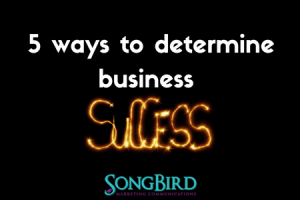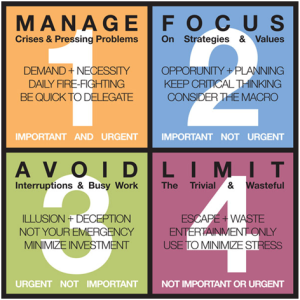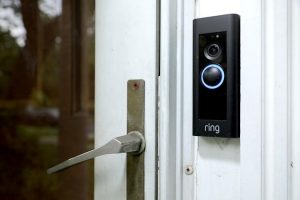So, you’ve done the research, and you, like so many other HR professionals, have come to understand the powerful link between employee engagement and recognition. Unfortunately, your company doesn’t have a formal recognition program in place.
You know that introducing a new, comprehensive employee recognition and rewards program is crucial for your culture and overall business success. You’ve even shopped around and found a recognition platform that is ideal for your organization. The only problem standing between your desire to make a change and launching this new initiative is lack of funding.
Like most new programs within an organization, employee recognition requires executive buy-in. Convincing company executives is not always an easy task, especially if you’re competing with other departments vying for funding.
There are, however, some steps you can take to convince company executives that employee recognition deserves the green light.
Why a recognition program?
No matter what idea you bring before the executive committee, their first question is going to be why. Why does the company need this recognition program, and why now? Don’t wait for them to ask. Instead, take a proactive approach and begin your presentation explaining the need for a new recognition program.
For example, you can share with your executives the fact that only 19 percent of employees considered themselves “very engaged” in the workplace.?This level of disengagement has cost companies over $ 550 billion. It can lead to higher turnover rates, more absenteeism, and hinder recruitment efforts. This problem will only intensify if you don’t address disengagement head on.
Disengagement can also lead to lower productivity in the workplace. How can you improve engagement across your organization and reap the benefits? The answer is recognition. It’s known that recognition has the greatest impact on engagement. In fact, 40 percent of workers said that they would put more energy into their production level if they were recognized for their hard work. Also, a recent study showed that 80 percent of workers don’t feel recognized or rewarded at work, and simply raising wages hasn’t helped. Employees crave recognition and it’s time we give it to them by creating an impactful recognition program.
Prove your case
Now that you have proven why your company needs a recognition program, it’s time to show them the numbers. Keep in mind that no executive is going to put money into a recognition program without some assurance of a positive ROI. The good news is that there is plenty of research pointing to the benefits of employee recognition.
One Gallup poll alone shows that improved engagement has the power to reduce absenteeism (41 percent) and turnover (24 percent), while raising productivity (17 percent). And, to restate above, it’s been reported that recognition has the greatest impact on employee engagement.
If executives are still not convinced, share these findings from a recent Achievers report:
- “Lack of recognition” was the third most common reason employees chose for leaving their employer
- 82 percent of employees wish they received more recognition for their work
- 40 percent answered just “okay” and nearly 1 in 5 said “horrible” when asked how their company or manager is at recognizing them
- 90 percent say when they receive recognition it motivates them to work harder
- 91 percent “strongly” or “somewhat” agreed a strong recognition culture makes a company attractive to work for
- 91 percent “strongly” or “somewhat” agreed recognizing their colleagues makes them feel happier at work
Don’t forget to share these powerful recognition stats taken from a recent Brandon Hall Group report to further prove your case:
- Organizations that rate their culture of recognition highly are 3x more likely to see increased employee retention, 2.5x more likely to see increased employee engagement, 2.25x more likely to give frequent recognition, and 79 percent more likely to give their employer brand a high rating
- Recognition and Rewards (R&R) technology users are 72 percent more likely to rate their culture of recognition highly than non-users
Lastly, every time organizations double the number of recognitions in their organization, their overall engagement is expected to go up five percentage points.
Recognition, however, doesn’t only affect employee happiness and performance; it can also make a positive impact on your company’s overall goals. Studies have shown that highly engaged businesses achieve a 10 percent increase in customer satisfaction, 20 percent rise in sales numbers, and 21 percent growth in profits. That’s not all. Companies that invest in employee recognition are four times more likely to see an increase in stock prices and twice as likely to improve their NPS scores.

Share your vision
Once you’ve grabbed your executive team’s attention with some great statistics, it’s time to introduce the platform. While the executives don’t need to know every little detail of the employee recognition platform you’re eyeing, it’s crucial that you provide a comprehensive overview.
Focus on features that are most meaningful to your executive team, such as integrations and scalability. You also want to highlight the fact that it’s an easy-to-use platform and that anyone can provide recognition in just a matter of minutes. Explain that the recognition platform offers mobile capabilities, which allows executives, managers, supervisors, and employees to offer recognition from anywhere at any time. A quick, simple, and on-the-go platform will improve participation and the overall effectiveness of the program.
Keep in mind that buy-in from the executive level is not only about money. You will also need their participation to create a recognition program that provides the results your company needs. A recent Gallup poll showed that employees believe that the most memorable recognition came from their manager (28 percent) or a high-level official (24 percent). And 58 percent of workers said their manager relationship would improve with more recognition. It’s important for executives to become recognition champions and understand their role in this new initiative.
As you share your vision with executives, give them a sneak peek into the success stories of other companies who have reaped the benefits of a recognition program. Major companies, such as Kellogg’s, McDonald’s and Discover have implemented successful recognition programs that show a strong ROI. These success stories can help executives see the impact of building a culture of recognition. Check out the videos below highlighting recognition program success stories.
Kellogg’s Recognition Program Success Story
McDonald’s Recognition Program Success Story
Tie in company goals
A great way to entice your company executives to invest in recognition is to tie the program to the company’s overall goals. For example, if your company has a goal to improve sales in the upcoming year, create a campaign within your recognition program to incentivize and motivate the Sales team. For every Sales employee who hits their quota, they will be publicly recognized and rewarded points; the points can later be redeemed for a reward of their choosing.
Recognition can also help to modify employee behaviors, which can improve safety and compliance within the workplace. A prime example of how this works comes from a New York hospital. The hospital found that only 10 percent of the staff were following the hand washing compliance policies. They introduced a comprehensive recognition program that provided instant feedback (I.e., given a positive message saying, “Good job!”) when employees followed appropriate procedures. Within just four weeks, the hospital was able to raise the compliance rate to 90 percent.
Measure success
Obtaining the green light from your executives is the first major hurdle, but the best way to secure funding and ongoing support for a recognition program is to plan right from the start. Determine how you will measure the success of your recognition program and how frequently you will analyze and report these metrics. For example, measure program activation rates, recognition frequency, and leadership participation to name a few; even find positive correlations between recognition and business results, such as improved retention, customer satisfaction, and cost savings. Having these parameters and goals established right from the beginning will make it easier for you to update executives on the success of the program. It will also keep them interested in your recognition program and make them more likely to provide continued funding.
Let’s take a closer look at two major companies who are able to successfully measure success when it comes to their recognition programs.
Meijer
Meijer, a family-owned superstore based out of the U.S. Midwest, launched its mteam recognition program and was able to find positive correlations between recognition and core business goals:
- Retention: Comparing recognition rates between current team members and team members who had left Meijer, those who stayed at Meijer received significantly higher recognition rates on average than those who left. One surprising result was that people who chose to leave Meijer were receiving statistically identical rates of recognition as those who were asked to leave the organization. Together, these results suggest that recognition is important to retaining valued employees, even if employees don’t call it out as the primary reason for their departure.
- Collaboration and belonging: Data showed that the strength of networks in each Meijer store location had increased since the introduction of mteam. In an effort to improve each team member’s sense of belonging, the program has been able to bring team members together and increase connections.
- Customer experience: Customer survey data by location showed that stores with higher recognition rates reported higher customer satisfaction overall. In fact, increasing recognition from twice a month to twice a week yielded a 5 percent increase in customer satisfaction scores.
General Motors
General Motors (GM) is able to measure their recognition program’s success with real-time data and insights. The GM Recognition Program reached a 97 percent activation rate and 7 out of 10 employee are active in the program monthly, with people leaders sending an average of 4 recognitions per month. Just six months after the program launched, employee recognition became one of the five most improved areas in their engagement survey. Recognition was also the most commented topic in the engagement survey, with more than 5,000 positive comments about the program and how employees felt more appreciated and valued in the workplace. Turn to examples like Meijer and GM when it comes to measuring your recognition program’s success and ROI.

Get executives on board with recognition
With nearly half (45 percent) of workers saying leadership is “minimally” or “not at all” committed to improving company culture, it’s important for executives to take part in culture initiatives. Launching a new recognition program can be the key to creating an amazing culture of appreciation.
When seeking buy-in from company executives for a new recognition program, the most important thing is to take a company-wide view of your program. Your executives want to know that this new initiative will significantly impact the company’s bottom line and provide a positive ROI across the board. Learn more about how to get executive buy-in for your recognition program by accessing our webinar recording, “Top 8 Things to Consider When Building a Business Case for a Recognition Platform.”
Business & Finance Articles on Business 2 Community
(54)








